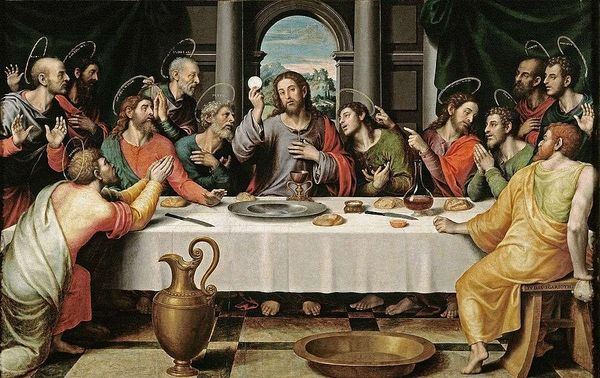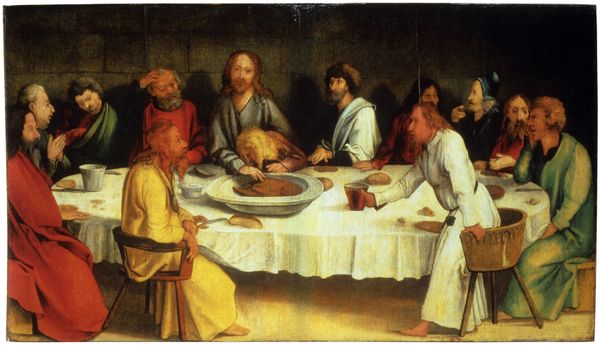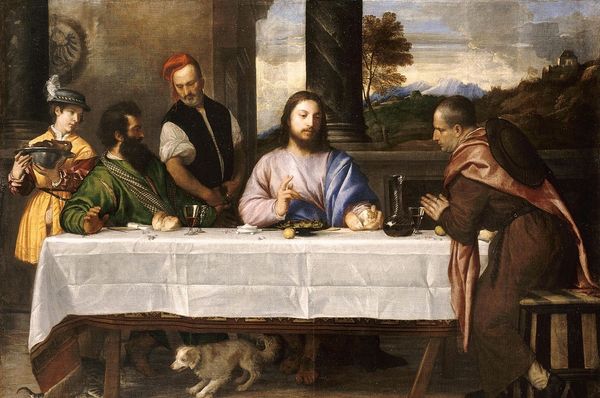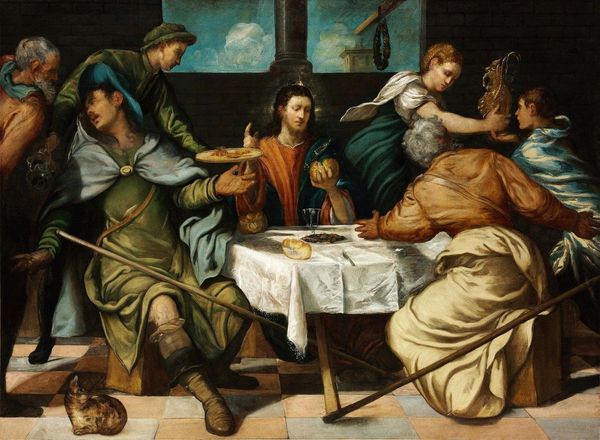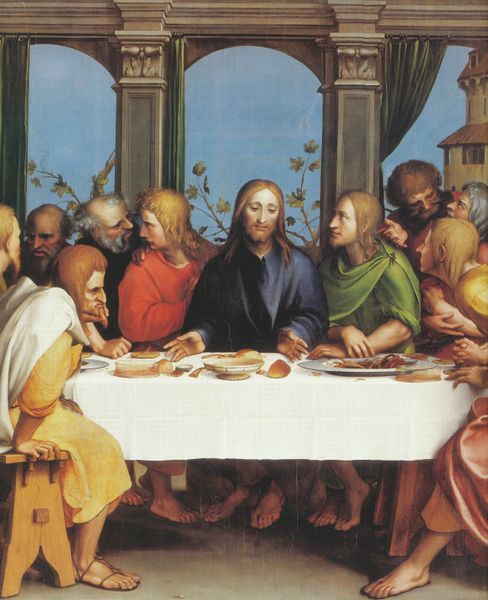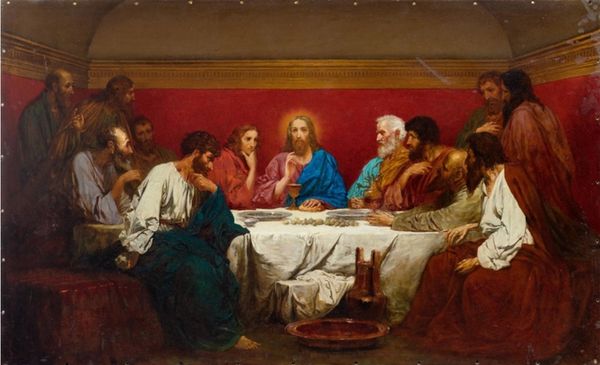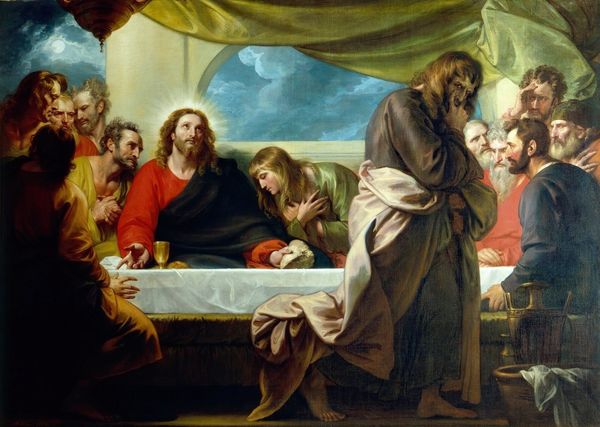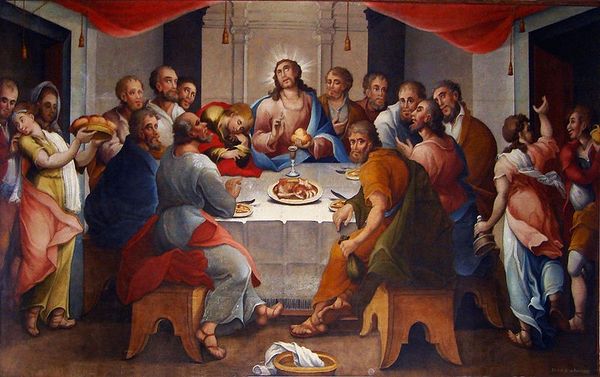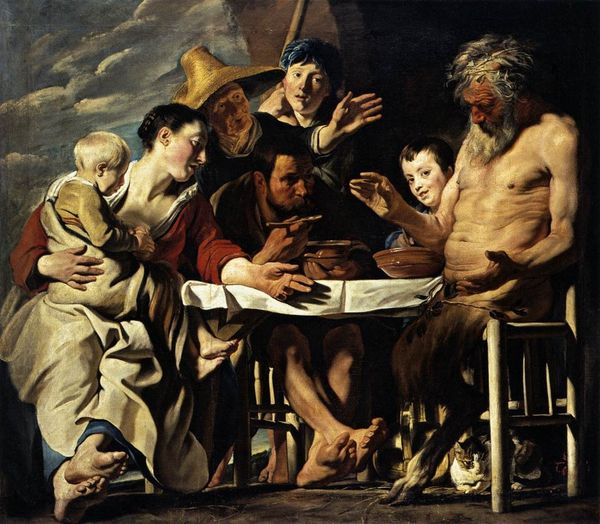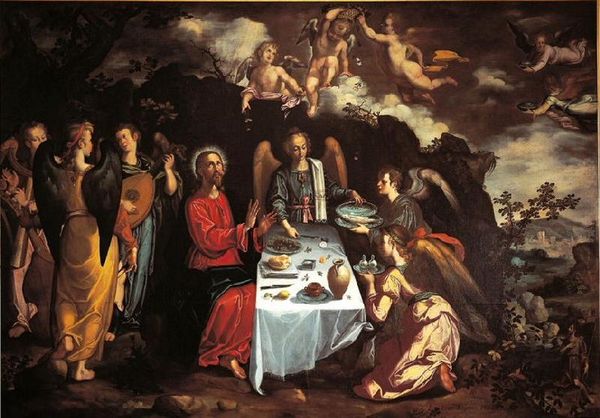
painting, oil-paint
#
venetian-painting
#
narrative-art
#
painting
#
oil-paint
#
figuration
#
11_renaissance
#
oil painting
#
group-portraits
#
genre-painting
#
history-painting
Dimensions: 168 x 270 cm
Copyright: Public domain
Editor: Here we have "The Last Supper," rendered in oil by Jacopo Bassano around 1546. It strikes me as less a moment of divine solemnity, and more...well, a crowded dinner party! What story does Bassano seem to be telling through this more "everyday" lens? Curator: Indeed. Bassano places this iconic event within a distinctly Venetian, almost rustic, setting. Observe the inclusion of genre elements - the animals under the table, the somewhat coarse-featured figures. It speaks to a deliberate democratization of religious art. How does this approach impact the viewer’s relationship to the subject matter, versus, say, Leonardo’s more idealized interpretation? Editor: I guess it makes the scene feel more accessible, relatable maybe? It’s less about worshipping figures on high and more about picturing them as…people. But did this down-to-earth depiction face any criticism back then? Curator: Certainly. The Counter-Reformation sought to re-establish a sense of decorum and religious authority, making sure that art adhered to strict theological guidelines. While not explicitly condemned, paintings like this tested the boundaries. This "genre-fication" of sacred stories raised questions about appropriate representation, about where the sacred stops and the everyday starts. Do you find that the combination weakens or strengthens its message? Editor: I can see both sides. On one hand, it might diminish the sense of awe, but on the other, it invites you to contemplate the humanity of Jesus and his disciples in a fresh way. Thank you for explaining that context! Curator: My pleasure! Bassano’s choice really shows how the socio-political context informs the way we understand art, then and now. Food for thought, indeed.
Comments
No comments
Be the first to comment and join the conversation on the ultimate creative platform.
